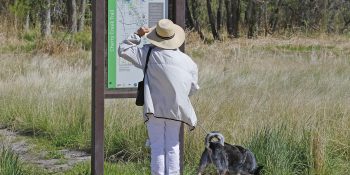Denver: As the holidays get closer, the Colorado Department of Public Health and Environment reminds Coloradans to follow some simple food safety tips so their holiday feast doesn’t turn into a holiday fiasco.
“The most frequent causes of food borne illnesses are from foods kept at unsafe temperatures, inadequate hand washing, inappropriate food handling, and preparing and serving foods on soiled services or with contaminated utensils,” said Troy Huffman, retail food program coordinator at Colorado Department of Public Health and Environment. “Other causes include cooking foods such as eggs, poultry and meats below the proper temperature. By following some simple food safety guidelines, holiday parties and meals will be safe and enjoyable for all.”
Here are some basic tips:
Cool all leftovers: Leftovers should be cooled to 41 degrees F or lower within four hours after cooking. Do not leave foods containing meat, dairy, eggs, fish or poultry at room temperature. This includes casseroles and pumpkin or other custard pies that are popular during the holidays.
Wash hands: Use with soap and warm water before food preparation and after using the bathroom, changing diapers, sneezing, coughing, eating, drinking, or smoking. Also, wash hands after handling raw meat, eggs, fish, or poultry.
Don’t cross-contaminate: Bacteria can spread throughout the kitchen and get onto cutting boards, knives, sponges and countertops. Minimize cross-contamination risks by thoroughly cleaning and sanitizing knives, cutting boards, and other utensils, particularly between the preparation of raw meat and foods that will not be further cooked. Using a commercially prepared sanitizing wipe can be an easy and quick cleaning alternative to help minimize cross-contamination.
Cooking Temperatures: Buy a cooking thermometer, and use it properly. The thermometer should be placed in the thickest part of the food and don’t let it touch bone, fat, or gristle. Turkey and stuffing should be cooked separately to 165 F and ham to 145 F before serving. Recipes with eggs must be cooked thoroughly to 155 F or above. If egg dishes do not require cooking, such as homemade eggnog or salad dressing, use pasteurized egg products instead of shelled eggs.
Thaw Foods Properly: Do not thaw foods at room temperature. Plan enough time to thaw food in the refrigerator, placing thawing items on a tray to catch any juices that may leak from the packaging to avoid cross-contamination of other foods.
The number of days a frozen turkey takes to thaw in a refrigerator depends on the size. A turkey 4-12 pounds takes one to three days to thaw; 12-16 pounds takes three to four days; 16-20 pounds takes four to five days; and 20-24 pounds takes five to six days.
If you’re ill: When you’re not feeling well, do not prepare or handle foods.
SPREAD THE NEWS
COMMENT, Like, Follow & SHARE @I70Scout
CURRENT EDITION
WEATHER & TRAFFIC PUZZLES RECENT NEWS ADVERTISE WITH US








